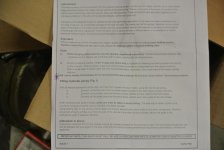Is there any concern regarding the rubber currently used for master cylinder and wheel cylinder seals?
You have to be concerned with rubber bits but NOT brand new rubber compounds. Your concern should focus on rubber parts that have had previous exposure to DOT-3 or DOT-4.
First, no readily available NEW brake rubber has issues with exposure to DOT-5. Period. Modern brake rubber is typically EPDM which has no problem with silicone fluid. The only seals easily attacked by DOT-5 are silicone seals which are not used in brake systems. I have seen manufacturers like TRW will not warrant new MCs used with DOT-5. The explanation given to me (second hand by a vendor) was that the techs at TRW feel DOT-5 offers less lubrication for the seal which may shorten their lives.
IF the seals in the brake system have previously been exposed to DOT-3 or DOT-4, then long term exposure to DOT-5 will cause the old seal to swell and sluff off black goo. Complete failure of such seals can happen quickly or take years to occur. Replace ALL the old rubber in a system that has been using DOT-3 or DOT-4. That includes MC seals, wheel cylinder seal, rubber flex lines, PDWA seals and proportioning valve components where applicable. Most people I have discussed this with fit braided stainless brake hoses to insure a firmer pedal. If you are fitting new MCs and/or wheel cylinders, inspect them carefully. Some reproduction parts are assembled with brake fluid as a lubricant, not the traditional red rubber grease. If you see the seals are lubricated with brake fluid in a new cylinder... rebuild it with new seals even if it is new.
Isopropyl is great for flushing the old metal lines. It is also good for washing out master cylinders and wheel cylinders to remove contaminants. Since you should have the flex hoses, and all the cylinders disconnected... you can easily blow through the lines with low pressure air. Leave the air running for a few hours to evaporate all the isopropyl.
There is lots of online information about filling reservoirs and bleeding the system. Make the process easy on yourself to the extent possible. Take a long, very clean screwdriver and place its tip against the bottom of the reservoir through the open top. Slowly, gently pour the DOT-5 fluid against the top of the screwdriver shank so it runs slowly down. This prevents a lot of bubbles from becoming trapped in the fluid. You may also find it is easier to get good results if you vacuum bleed the system. Pressure bleeding can trap bubbles in the system while vacuum bleeding will draw them out.

 Hey there Guest!
Hey there Guest!
 smilie in place of the real @
smilie in place of the real @
 Pretty Please - add it to our Events forum(s) and add to the calendar! >>
Pretty Please - add it to our Events forum(s) and add to the calendar! >> 




 A friendly reminder - be careful what links you click on here. If a link is posted by someone you don't know, or the URL looks fishy, DON'T CLICK. Spammers sometimes post links that lead to sites that can infect your computer, so be mindful what you click.
A friendly reminder - be careful what links you click on here. If a link is posted by someone you don't know, or the URL looks fishy, DON'T CLICK. Spammers sometimes post links that lead to sites that can infect your computer, so be mindful what you click.